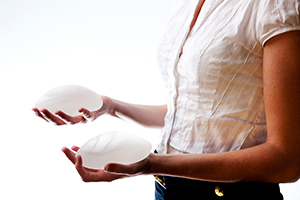Breast Augmentation
-
 Medically Reviewed by Charlie Chen, MD | Last updated 10/18/2023
Medically Reviewed by Charlie Chen, MD | Last updated 10/18/2023 - Overview
Overview
What is breast augmentation?
Breast augmentation is a procedure that enlarges the shape of the breasts using implants or fat grafts (fat taken from another part of the body and transferred to the breast). Breast augmentation can be performed for both cosmetic and reconstructive purposes.

Breast Augmentation Before and After Photo
Topics covered on this page
- Cost of breast augmentation
- Factors affecting the cost
- Is the cost covered by insurance?
- Warranties with implants
- Are you a candidate?
- Things to know beforehand
- Options with breast augmentation
- Recovery time
- When to expect results
- How long do breast implants last?
- Tips for choosing a surgeon
Cost of breast augmentation surgery
The average cost of breast augmentation is $4,516, according to the American Society of Plastic Surgeons (ASPS). However, this only covers the surgeon’s fee. The overall cost can range between $4,500 and $15,000 depending upon various factors. Below is the average cost for different types of breast augmentation procedures:
- Breast Implants (Saline or Silicone): $5,000 to $10,000.
- Cohesive Gel (“Gummy Bear”) Implants: $6,000, to $12,000.
- Fat Transfer Breast Augmentation: $4,500 to $15,000.
- Breast Lift with Implants: $8,000 and $14,000.
Not sure if you need a breast lift? Here’s a simple way you can find out whether or not you may need a breast lift in addition to augmentation prior to your doctor’s visit. First, stand in front of a mirror and observe the nipples and the crease underneath your breasts.
- Are the nipples at or below the level of breast crease?
- Do you have a significant degree of skin laxity to your breasts?
If you answered YES to one or both of these questions, there’s a good chance you might need a breast lift. To get a quote based on your specific needs, set up a consultation with a board-certified plastic surgeon near you.
Factors affecting the cost of breast implants
There are several factors that can affect the overall cost of breast augmentation. Here are some of the top factors:
- Surgeon’s Fee: The experience and reputation of your plastic surgeon will influence the overall cost of your procedure. In general, highly skilled and in-demand surgeons may charge a premium for their services. However, in many cases the extra expense is worth it to ensure a positive experience and successful outcome. In fact, a study conducted with nearly 37,000 patients found that patient satisfaction after plastic surgery is most affected by surgeon-related factors, such as the level of confidence in the surgeon and the surgeon’s concern for the patient’s questions and concerns. Make sure you choose your surgeon wisely.
- Anesthesia: The administration of anesthesia requires the expertise of an anesthesiologist. The type of anesthesia used, the duration of the procedure, and the qualifications of the anesthesia provider can impact pricing.
- Surgical Facility: The choice of surgical facility where your breast augmentation is performed may impact the cost. These fees cover the use of the operating room and related services. To ensure a safe experience, it’s advisable to check if your surgical facility is certified by the Accreditation Association for Ambulatory Health Care (AAAHC).
- Location: The average cost for medical services can vary from one geographic location to another. In general, urban areas tend to have higher fees compared to rural areas. You can get a rough idea of local procedure prices by using the Healthcare Blue Book, which is similar to Kelley Blue Book for estimating car prices.
- Type of Implant: The cost can vary depending on the type of implant used. Silicone implants typically cost more than saline implants. Also, if you choose other options like cohesive gel (“gummy bear”) implants or teardrop shape vs. round, they may come with higher costs.
- Complexity of the Procedure: The complexity of your breast augmentation procedure will make a difference. If it involves significant reconstruction or additional procedures, you can expect the fees to be on the higher side.
- Medical Care: These fees typically include any pre or post-operative appointments, tests, medications, surgical garments or any other items associated with your breast augmentation.
- Added Procedures: The costs may be higher if you’re contemplating other cosmetic surgeries along with your breast augmentation, such as a tummy tuck or liposuction surgery.
- Insurance: In some cases, your breast augmentation may be covered by insurance if it’s deemed medically necessary. In these cases, insurance may cover a portion of the procedure. However, coverage can vary and specific criteria must be met to qualify.
If you are considering breast augmentation, set up a consultation with a board-certified plastic surgeon near you. This will provide you with an opportunity to discuss your aesthetic goals and gain a better understanding of the specific costs involved.
Is the cost covered by insurance?
Warranties with breast implants
Are you a candidate?
The following is a list of criteria that make someone a suitable candidate for breast augmentation surgery:
- You are in good overall health.
- You do not have any major medical problems (although breast augmentation may be performed for breast reconstruction after mastectomy).
- You are 18 years of age or older for saline implants or 22 years of age or older for silicone implants.
- You have a clear understanding of the risks and benefits associated with the procedure.
- You have realistic expectations.
Not everyone is an ideal candidate for surgery. You may not be a suitable candidate if:
- You have serious or ongoing medical issues.
- Your breasts have not fully developed (applies to women under the age of 22).
- You have unrealistic expectations.
- You are undergoing the surgery to please or impress someone else rather than for your own reasons.
To determine if you meet the criteria, schedule a consultation with a board-certified plastic surgeon near you.
Things you should know beforehand
The majority of women who undergo breast augmentation surgery under the care of an experienced plastic surgeon experience increased self-confidence and an improved quality of life after the procedure. However, breast augmentation is not without risks, and some patients may be dissatisfied with their results, highlighting the importance of being fully informed and having realistic expectations. Below are some things that many women who have had breast augmentation wish they had known before the surgery:
- Implants may not last a lifetime. Many plastic surgeons recommend replacing implants every 10-15 years.
- Pregnancy, menopause, and weight loss can affect the appearance of implants.
- The placement of incisions may be determined by your body type.
- You can’t go from small to large immediately. Petite women, in particular, may need to gradually increase the implant size over time.
- When in doubt, opt for the smaller implant. You can always increase the size later.
- Breast implants may impact your ability to breastfeed.
- Nipple sensation may be reduced or lost after breast augmentation.
- Your posture might be affected. Large breasts can be heavy, potentially affecting your posture and leading to back or neck pain.
- Mammograms can be challenging. Saline and silicone implants may obscure mammogram images.
- Aging can affect your implants. The aging process includes a loss of tissue elasticity and sagging skin, which may impact the appearance of implants over time.
Options with breast augmentation
There are many options for breast augmentation, and understanding how to choose the right type for you can be overwhelming. Working with an experienced plastic surgeon is the best way to ensure that you get the results you want with the most appropriate implants for your body. Among the considerations you and your doctor should discuss are:
- Implant type (saline, silicone)
- Implant size
- Implant texture (smooth, textured)
- Implant shape (round, teardrop)
- Implant placement (over or under the muscle)
- Incision type
- Your desired breast profile
Each of these will be discussed in detail below. Types of breast implants There are several kinds of breast implants to choose from, each offering its unique features and benefits. The most commonly used types include:
- Silicone Gel Implants: These implants are filled with a cohesive silicone gel that closely resembles the natural feel of breast tissue. They have a silicone shell and are available in different shapes like round or teardrop (also known as anatomical). Silicone gel implants are known for providing a soft and realistic appearance. If they rupture, the gel typically remains within the implant shell or nearby tissue. Regular check-ups are important to spot potential ruptures.
- Saline Implants: Saline implants are filled with a sterile saline solution (saltwater) after they are inserted into the breast pocket. They also have a silicone shell and come in various shapes and sizes. Saline implants tend to feel firmer compared to silicone gel implants. If they rupture, the saline is harmlessly absorbed by the body, making rupture detection easier as the implant deflates. While generally safe, some women may find their texture and feel less natural than silicone gel implants.
- Cohesive Gel (“Gummy Bear”) Implants: Cohesive gel implants, often referred to as “gummy bear” implants, contain a firmer gel that maintains its shape even if the implant shell is compromised. These implants are designed to mimic the feel of natural breast tissue and provide a more stable shape. They are less likely to ripple or fold. Cohesive gel implants come in various shapes and are a popular choice for those seeking a more anatomical breast shape.
Consulting with a board-certified plastic surgeon is essential to determine the most appropriate implant type and shape for your desired results.
Determining your correct size
Smooth or textured
Breast implant profile
A breast implant profile refers to how far an implant projects from the chest wall when you are standing. There are three grades of implant profiles: moderate, moderate plus, and high profile. The larger the size and/or profile of the implant, the more attention you may attract. Your personality, body type, and desired outcome will influence your choice of breast implant profile. Your surgeon will assist you in determining the most suitable profile for you based on your body type and your desired outcome.
- A moderate breast implant profile provides a rounded, natural look and projects less than the moderate plus and high-profile implants. If you have a broad chest, your doctor may recommend this option. On the other hand, if you have a narrow build, the low-profile implant may be too wide for your body.
- A moderate plus breast implant profile, also known as normal, regular, or standard, offers more projection but less width compared to a moderate profile. However, if you have a narrow build, the moderate breast implant profile may still be too wide for your body.
- A high breast implant profile allows for the most projection of the breasts, resulting in a significant fullness in the upper part of the breast. This may or may not appear natural. With this option, the implant doesn’t push into the underarm area because it has the least width of the three. If you have a narrow build, the high breast implant profile may be the best option for you.
Incision types
The next consideration is the type of incision to be made. Plastic surgeons aim to minimize the incision size, but some implants may require larger incisions than others. Ultimately, the decision on the incision type rests with your surgeon, but it’s essential to communicate your concerns and preferences to them. The incision’s placement will determine the type of scarring, if any, you might have. There are four different incision options that may be used during the breast augmentation procedure:
- Transaxillary – This incision is made in the armpit, potentially leaving a visible scar when you raise your arms. Some implant manufacturers do not recommend this incision due to the potential for implant damage.
- Periareolar – This incision is made just below the nipple. Women with small nipples or those requiring larger incisions may not be suitable candidates for a periareolar incision. Additionally, this incision may increase the risk of overly firm implants and impact future breastfeeding.
- Inframammary – This incision is made in the crease where the breast meets the chest. Many surgeons prefer this incision because it tends to heal well and is not associated with significant risks or complications.
- Transumbilical / TUBA – This incision is made at the bellybutton, and the implant is pushed up to its final position. This incision is not favored by most surgeons and leaves a scar that is not concealed by a bikini.
Breast implant incisions typically range from one to three inches in length. Scars usually fade over six months to a year and match the surrounding skin’s color.
Implant placement: over or under the muscle?
Your plastic surgeon will determine whether your implants should be placed over the pectoral muscle (subglandular) or under it (submuscular) based on your body type, desired outcomes, and lifestyle.
- Subglandular placement involves positioning the implant behind the mammary gland but in front of the pectoral muscle. This placement is ideal for silicone implants and for individuals with ample breast tissue. It ensures that flexing chest muscles won’t distort the implant, but the implant may be more visible and easier to feel. Subglandular placement generally results in a quicker healing process.
- Submuscular placement, on the other hand, positions the implant partially or entirely behind the pectoral muscle. This placement is typically recommended for saline implants and for those with minimal breast tissue or a family history of breast cancer. Submuscular placement often yields a more natural appearance, but the implants may distort when the pectoral muscles are flexed, which could be a concern for bodybuilders.
Recovery time
During the initial days following your surgery, your breasts will be swollen, causing your implants to appear larger, tighter, and positioned higher than intended. This is a normal part of the process, and as the swelling gradually diminishes, your implants will settle into a more natural position. Swelling may persist for several weeks post-surgery. By the one-month mark, you should notice a reduction in swelling, although it will take several months for it to completely subside. During this period, it’s common for your implants to appear slightly asymmetrical, with one potentially looking tighter or fuller than the other. It typically takes about 4-6 months for your implants to settle into their intended location, with several additional months required for you to fully appreciate the final results.
When to expect results
The timeline for implant settling can vary from patient to patient, but in most cases, the implants will find their optimal position within 4-6 months following the surgery. Several factors influence how quickly your implants will settle, including their size, the tightness of the overlying skin and muscle, and the size of the surgically created implant pocket. Patience is crucial in this process. Some patients may require up to a year for complete resolution of all swelling and for contouring to stabilize, revealing the final results.
How long do breast implants last?
Breast implants usually have an average lifespan of around 10 years, although many can last for several additional years. It’s essential to have them regularly monitored to ensure their integrity and detect any potential leaks. It’s quite probable that one or both implants will require replacement over your lifetime, and some women may opt to change sizes in the future.
Tips for choosing a plastic surgeon
It is important to carefully select your breast augmentation surgeon. The surgeon you choose can significantly impact your surgical outcome and overall satisfaction. Find a plastic surgeon with extensive experience in performing breast augmentation procedures. Also, make sure that they are board-certified and affiliated with one or more of the following organizations:
- The American Board of Plastic Surgery
- The American Society of Plastic Surgeons
- The Aesthetic Society
EnhanceMyself.com relies on sources such as professional medical organizations, government agencies, academic institutions, and peer-reviewed scientific journals to write it’s articles. Learn more about how we ensure our content is accurate, in-depth, and unbiased by reading our editorial guidelines. *Medical Disclaimer: This website does not provide medical advice. Read more.



